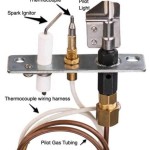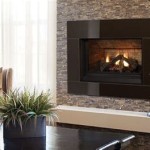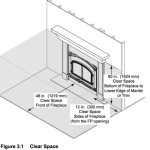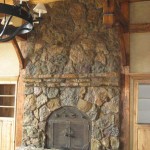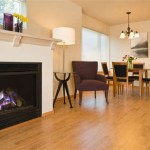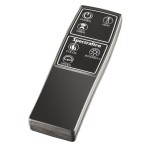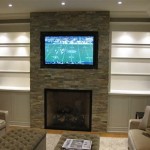Best Rated Pellet Fireplace Inserts: A Comprehensive Guide
Pellet fireplace inserts offer an efficient and aesthetically pleasing solution for heating homes. They provide the ambiance of a traditional fireplace while utilizing wood pellets, a renewable and cost-effective fuel source. Selecting the best pellet fireplace insert requires careful consideration of various factors, including heating capacity, efficiency, features, and installation requirements. This article provides a comprehensive overview of top-rated pellet fireplace inserts, assisting homeowners in making informed decisions.
Pellet fireplace inserts are designed to be installed within existing masonry or prefabricated fireplaces. They burn compressed wood or biomass pellets, which are automatically fed from a hopper into the firebox. This automated feeding system ensures consistent heat output and reduces the need for frequent reloading, a characteristic that differentiates them from traditional wood-burning fireplaces. The combustion process in a pellet fireplace insert is generally more efficient and produces less smoke and emissions compared to open fireplaces.
Understanding Key Features and Specifications
Before evaluating specific models, it is crucial to understand the key features and specifications that define a pellet fireplace insert's performance and suitability. These factors influence heating capabilities, operational convenience, and overall value.
Heating Capacity (BTU Output): British Thermal Units (BTUs) measure the amount of heat a pellet fireplace insert can generate per hour. The required BTU output depends on the size of the area to be heated, the insulation levels of the home, and the climate. Generally, a higher BTU output is necessary for larger spaces or colder climates. Manufacturers typically provide guidelines on the recommended heating area for each model. It's advisable to err on the side of caution and select an insert with slightly higher BTU output than initially estimated to ensure adequate heating during peak cold periods.
Hopper Capacity: The hopper is the container that holds the wood pellets. A larger hopper capacity means less frequent refills. Hopper capacity is usually measured in pounds. Consider the burn rate of the insert when evaluating hopper capacity. An insert with a high burn rate will require more frequent refills, even with a large hopper. Users must balance the convenience of less frequent refills with the physical space occupied by a larger hopper.
Efficiency: Efficiency is a measure of how effectively a pellet fireplace insert converts fuel into usable heat. Higher efficiency ratings translate to lower fuel consumption and reduced heating costs. Pellet fireplace inserts typically have efficiency ratings ranging from 70% to over 85%. Look for models that are EPA-certified for high efficiency and low emissions. This certification indicates that the insert meets specific environmental standards and maximizes fuel utilization.
Ignition System: Pellet fireplace inserts use either automatic or manual ignition systems. Automatic ignition systems use an electric igniter to start the fire at the touch of a button. Manual ignition systems require the user to add a fire starter to the firebox and light it manually. Automatic ignition systems are generally more convenient, but they may require more maintenance and are susceptible to power outages (unless you have a backup power source). Manual ignition systems are simpler but require more user intervention.
Thermostat Control: Thermostat control allows the user to set a desired room temperature, and the pellet fireplace insert will automatically adjust its heat output to maintain that temperature. Thermostat control enhances comfort and energy efficiency by preventing overheating and maintaining a consistent temperature. Some models offer programmable thermostats with customizable heating schedules for different times of the day or week.
Blower Fan: A blower fan circulates heated air throughout the room, improving heat distribution and increasing the insert's effective heating range. The blower fan speed can often be adjusted to control the airflow and noise level. Look for models with variable speed blowers for optimal control and quiet operation.
Safety Features: Safety is paramount when operating any heating appliance. Pellet fireplace inserts should have safety features such as overheat protection, automatic shut-off mechanisms, and safety interlocks to prevent operation if components are not properly installed or maintained. Check for listings from recognized testing laboratories such as UL or ETL to ensure the insert meets established safety standards.
Emissions: Emissions refer to the amount of pollutants released into the atmosphere during combustion. EPA-certified pellet fireplace inserts meet stringent emission standards, minimizing their environmental impact. Lower emission levels not only benefit the environment but also contribute to improved air quality in the home.
Aesthetic Design: Pellet fireplace inserts are available in a variety of styles and finishes to complement different home décor. Consider the aesthetic design of the insert and choose a model that matches the existing fireplace surround and overall room design. Options include traditional, contemporary, and rustic styles, with various finishes such as black, nickel, and enamel.
Evaluating Top-Rated Models
Several pellet fireplace inserts consistently receive high ratings from consumers and industry experts. These models often excel in terms of heating performance, efficiency, reliability, and features. Below are some considerations for evaluating specific models.
Customer Reviews and Ratings: Online customer reviews and ratings provide valuable insights into the real-world performance and reliability of pellet fireplace inserts. Pay attention to reviews that discuss heating effectiveness, ease of use, maintenance requirements, and customer support experiences. Look for models with consistently high ratings and positive feedback from a large number of users.
Professional Reviews and Comparisons: Reputable publications and websites often conduct professional reviews and comparisons of pellet fireplace inserts. These reviews typically involve performance testing, efficiency measurements, and feature evaluations. Consider the findings of professional reviews when evaluating different models. These reviews often highlight the strengths and weaknesses of each insert, providing unbiased assessments of their overall value.
Warranty and Support: A comprehensive warranty provides protection against defects and malfunctions. A longer warranty period indicates the manufacturer's confidence in the quality and durability of their product. Inquire about the warranty coverage and the availability of customer support. Responsive and knowledgeable customer support can be invaluable in addressing any issues or concerns that may arise during operation.
Installation Requirements: Pellet fireplace inserts require professional installation to ensure proper venting and safe operation. The installation process typically involves connecting the insert to a chimney or vent system, installing a power outlet, and setting up the control system. Obtain quotes from qualified installers and factor the installation costs into the overall budget. Ensure that the installer is licensed and experienced in installing pellet fireplace inserts.
Maintenance: Regular maintenance is essential for ensuring the long-term performance and reliability of a pellet fireplace insert. Maintenance tasks typically include cleaning the firebox, emptying the ash pan, and inspecting the venting system. Some models have self-cleaning features that reduce the frequency of manual cleaning. Familiarize yourself with the recommended maintenance schedule and procedures before purchasing a pellet fireplace insert.
Cost: Pellet fireplace inserts range in price from several hundred to several thousand dollars. The cost depends on the heating capacity, features, and build quality of the insert. Establish a budget and compare the features and performance of different models within that budget. Consider the long-term cost of ownership, including fuel costs, maintenance expenses, and potential repair costs.
Factors Influencing Pellet Fireplace Insert Selection
The optimal pellet fireplace insert choice is contingent on individual needs and circumstances. Several factors must be considered to ensure the selected insert provides satisfactory heating and meets specific requirements.
Home Size and Layout: The square footage of the area to be heated is a primary factor in determining the appropriate BTU output. Open floor plans may require a more powerful insert than smaller, enclosed rooms. Consider the airflow and heat distribution characteristics of the home when selecting an insert.
Climate: The severity of the climate influences the required heating capacity. Colder climates necessitate inserts with higher BTU outputs to maintain comfortable indoor temperatures. Consider the average winter temperatures and the duration of the heating season when selecting an insert.
Insulation Levels: Well-insulated homes require less heating energy than poorly insulated homes. Assess the insulation levels of the walls, ceilings, and windows to determine the appropriate BTU output. Upgrading insulation can reduce heating costs and allow for a smaller, more efficient pellet fireplace insert.
Existing Fireplace Dimensions: The dimensions of the existing fireplace opening limit the size of the pellet fireplace insert that can be installed. Measure the width, height, and depth of the fireplace opening before selecting an insert. Ensure that the chosen insert fits properly within the opening and allows for adequate airflow and ventilation.
Venting Options: Pellet fireplace inserts require proper venting to exhaust combustion gases safely. Venting options include direct vent, chimney vent, and through-the-wall vent. The venting requirements depend on the insert model and local building codes. Consult with a qualified installer to determine the appropriate venting system for the home.
Local Regulations: Local building codes and regulations may impose restrictions on the installation and operation of pellet fireplace inserts. Check with local authorities to ensure compliance with all applicable regulations. Some jurisdictions may require permits for the installation of pellet fireplace inserts.
By carefully considering these factors, homeowners can make informed decisions and select the best-rated pellet fireplace insert to meet their specific heating needs and preferences.

Pellet Fireplace Inserts Complete Home Concepts

Gci60 Cast Iron Pellet Stove Insert Regency

Pellet Fireplace Inserts Best Fire Hearth Patio

Sawmill Creek Woodworking Community

Wood Stoves Pellet Gas Fireplace Inserts

Pellet Fireplace Inserts Best Fire Hearth Patio

Pellet Fireplace Inserts Insert Installation In Burlington Wi More

The Comprehensive Guide To Pellet Fireplace Inserts A Sustainable Choice For Cozy Comfort Chimney Techniques

The Comprehensive Guide To Pellet Fireplace Inserts A Sustainable Choice For Cozy Comfort Chimney Techniques

Comfortbilt 2800 Sq Ft Epa Certified Pellet Stove Fireplace Insert With A 47 Lbs Hopper Hp22i The Home Depot
Related Posts

